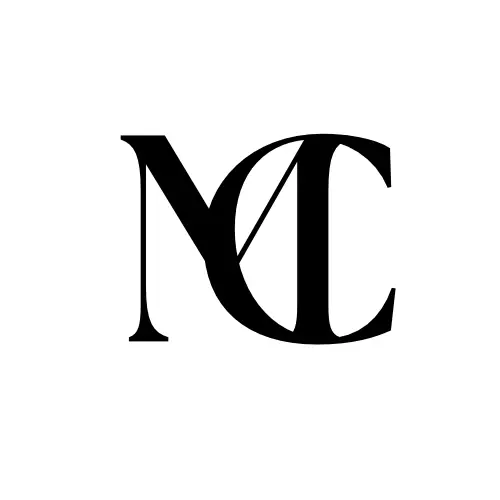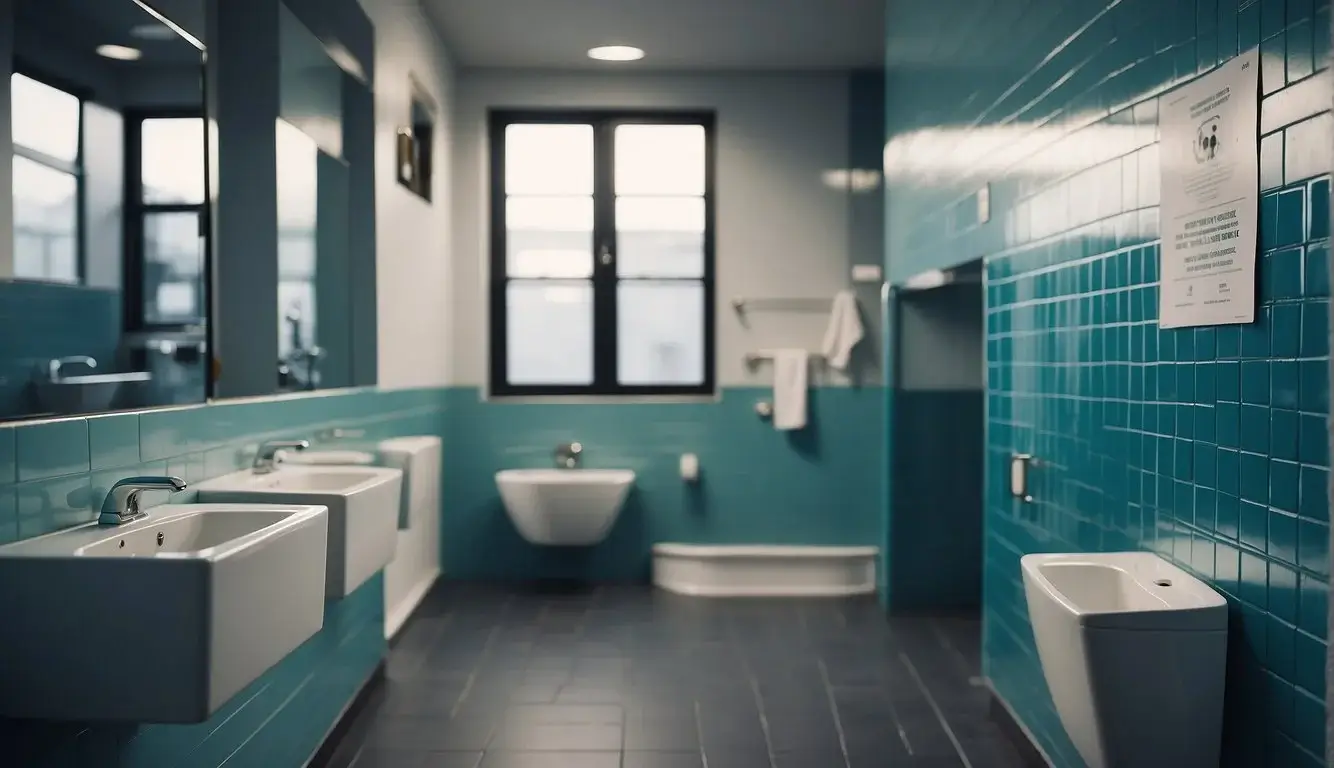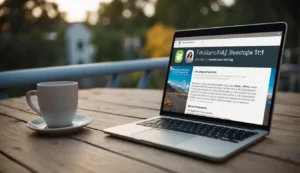Having explored numerous resources and engaged in substantive discussions, I’m keen to delve into the nuanced aspects of office restroom etiquette, a vital yet often overlooked element of workplace norms. While it might not be a common topic in business meeting discussions, adhering to these unspoken guidelines ensures a courteous and harmonious environment for every employee.
This guide to workplace bathroom etiquette is designed to navigate the delicate balance between personal hygiene and communal respect. From maintaining cleanliness to respecting others’ privacy, these guidelines are pivotal in creating a professional and considerate atmosphere. Practicing proper bathroom etiquette is about more than just personal habits; it’s a testament to our consideration for our colleagues and the collective well-being of the office environment.
- Observing bathroom etiquette is crucial for workplace hygiene and respect.
- Cleanliness and privacy in restrooms reflect personal and professional discipline.
- Proper behavior in office bathrooms can prevent conflicts and promote health.
Understanding Bathroom Etiquette
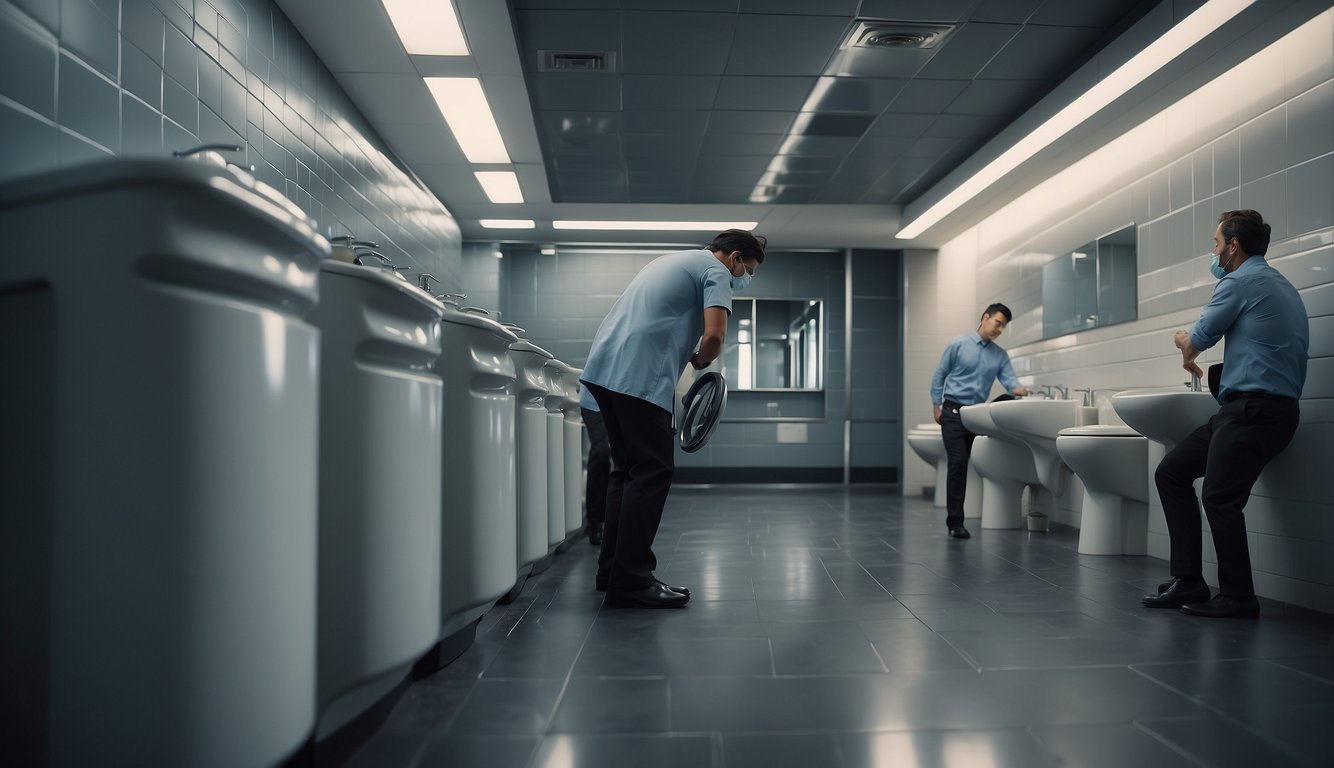
In my experience, knowing the unspoken rules of bathroom etiquette at work is essential for both comfort and professionalism. These norms help maintain a clean and respectful environment that everyone can appreciate.
The Basics of Etiquette
Cleanliness Is Key: I always make sure to leave the restroom as clean as, or cleaner than, I found it. It’s a simple act that goes a long way. For instance, if tissues are on the floor or if there’s a spill, I address it immediately. I found a helpful guide on maintaining cleanliness that emphasizes minimal spillage and proper disposal of waste products.
Queue Courteously: If the restroom is busy, I wait patiently in line, keeping a respectful distance from others. Everyone appreciates a bit of personal space, even while queuing.
Hand Hygiene: After using the bathroom, I wash my hands thoroughly. This is non-negotiable for me, not only for my health but also for the wellbeing of my colleagues.
Respect for Privacy
Stall Selection: Whenever possible, I choose a bathroom stall with at least one empty stall between it and an occupied one. This offers a bit of extra privacy and is a tip I picked up from office bathroom dynamics.
Conversations: I keep conversations outside the restroom. Privacy is paramount, and it prevents potentially awkward encounters. Remembering that someone’s restroom time is their private time is crucial.
Noise Awareness: I’m mindful of the noises I make. If I’m in a stall and need to unwrap something noisily, I do it as quietly as possible. It’s all about respecting the peaceful atmosphere.
By following these guidelines, I help to create a restroom environment that is clean, respectful, and considerate of everyone’s privacy. These simple practices make a big difference in the shared spaces at work.
Maintaining Cleanliness
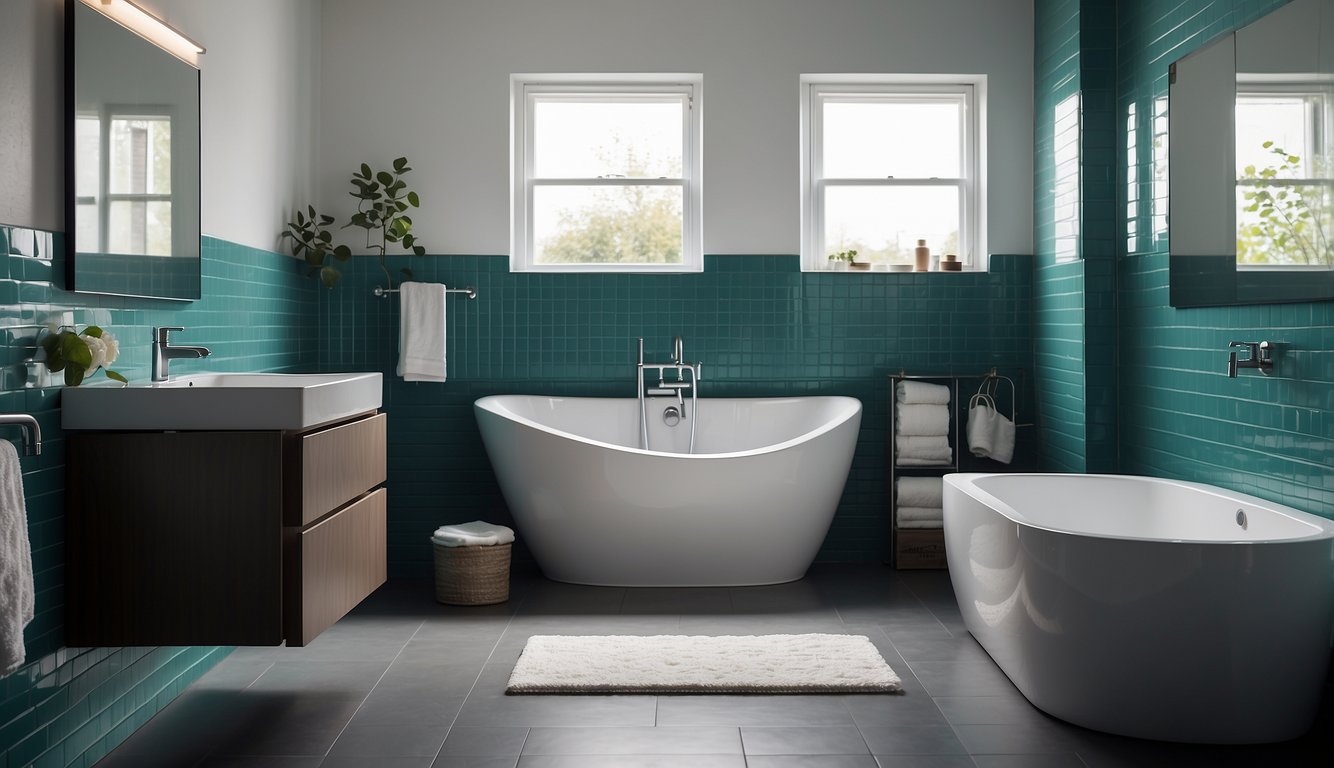
Maintaining a clean environment is crucial, especially in shared spaces like work bathrooms. I always use facilities properly and handle waste efficiently to contribute to a sanitary restroom.
Proper Use of Facilities
When I use the restroom, I remember that a simple act like flushing with the lid down is a considerate practice. This prevents the spread of germs and maintains a clean atmosphere. I also avoid actions that can lead to unnecessary mess. I think everyone should leave the facilities as they’d hope to find them.
Handling of Toilet Paper
It goes without saying that I use only as much toilet paper as necessary and make sure it flushes away properly. Excess tissue can cause blockages, and nobody wants the hassle of a clogged toilet. It’s all about using what you need and ensuring it doesn’t pile up.
Disposing of Waste
It’s not just paper waste I’m mindful of; any personal items or trash goes straight into the bin. I’ve noticed bathroom signs reminding us of the importance of not littering, which is an excellent nudge towards keeping the space tidy. A dirty bathroom can become a breeding ground for bacteria, and it’s just not pleasant to encounter. So, I always make sure to dispose of waste properly.
Hygiene Practices
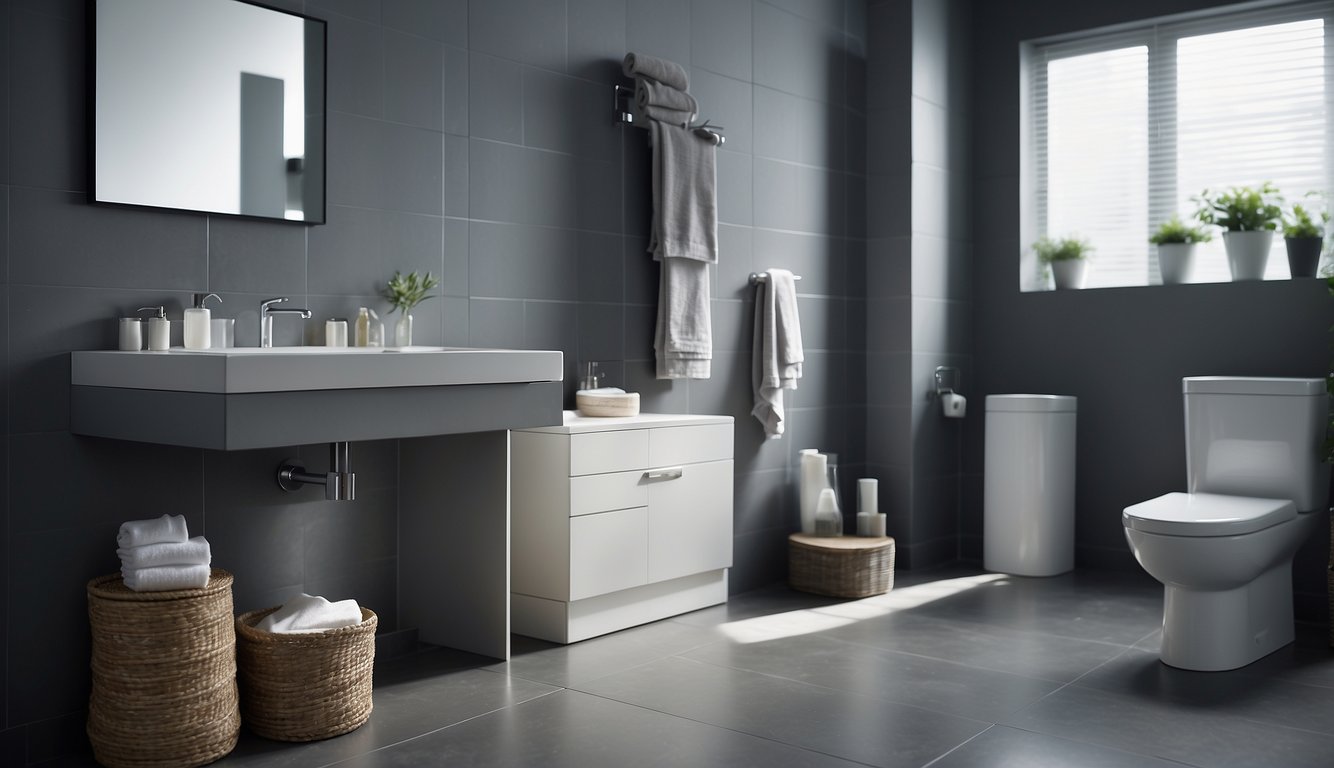
Maintaining good hygiene in the workplace bathroom is key to preventing the spread of germs and ensuring a comfortable environment for everyone. I’ll take you through some of the best practices concerning handwashing, minimizing germ spread through surface contact, and flushing.
Handwashing
Handwashing is the cornerstone of good hygiene. I always make sure to lather my hands with soap for at least 20 seconds—scrubbing the back of my hands, between my fingers, and under my nails—before rinsing thoroughly. This is vital after using the toilet and before exiting the bathroom.
- Steps for Effective Handwashing:
- Wet hands with clean, running water.
- Apply soap and lather well.
- Scrub all surfaces of the hands for at least 20 seconds.
- Rinse hands under clean, running water.
- Dry hands using a clean towel or air dry them.
Surface Contact
I am conscious of the surfaces I touch in the bathroom. To minimize contact with germs, I use a paper towel to turn off the faucet and open the door when leaving.
- Tips to Minimize Surface Contact:
- Use a paper towel when touching faucet handles and door knobs.
- Do not place personal belongings directly on bathroom surfaces.
Flush After Use
Flushing is an area I never overlook, as it’s essential in maintaining hygiene. I make sure to flush with the toilet lid down to prevent germs from becoming airborne. This simple act minimizes the spread of germs to nearby surfaces and keeps the air cleaner.
- Flush Protocol:
- Close the lid before flushing.
- Ensure everything in the toilet is flushed away completely.
Behavioral Expectations
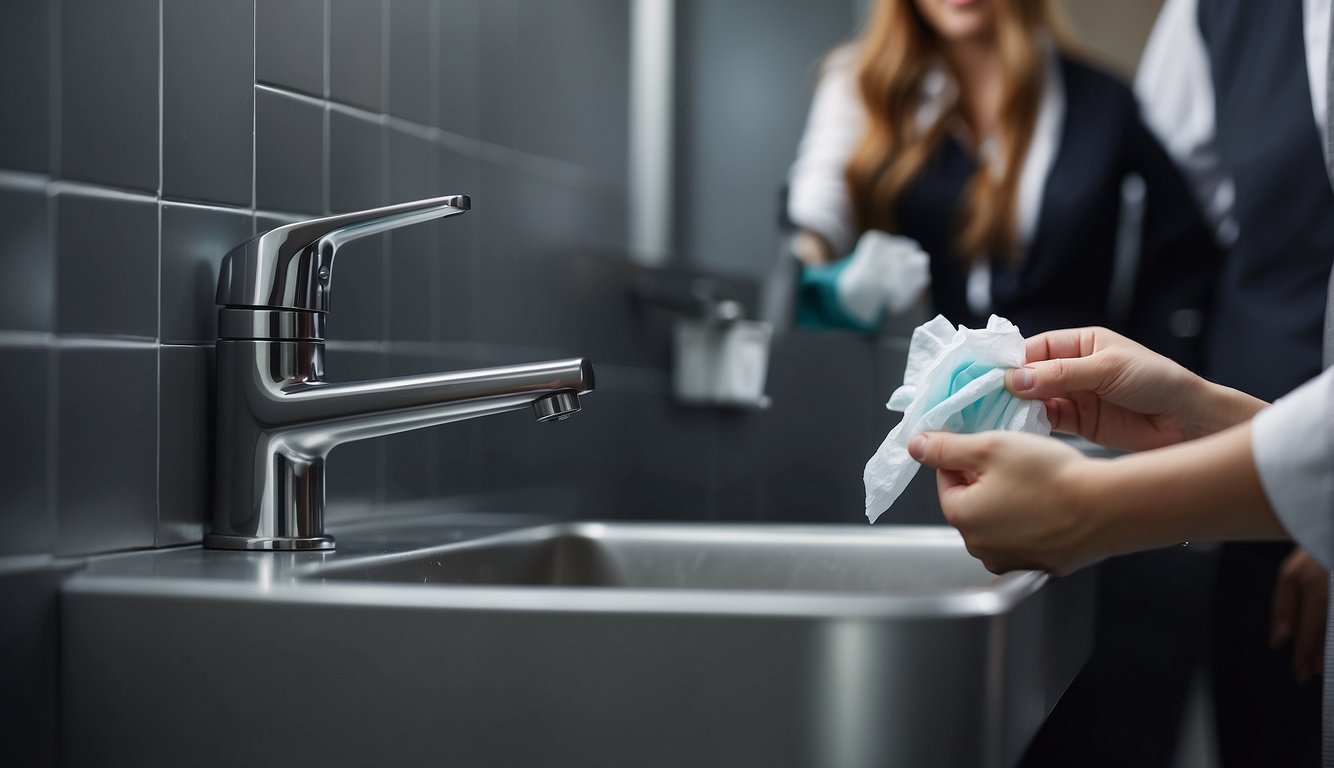
Respecting shared spaces is crucial in any workplace, and the bathroom is no exception. I’ll guide you through some specific behavioral expectations to ensure a pleasant and professional bathroom environment for everyone.
Noise Considerations
When I’m in the office bathroom, I make sure to keep noise to a minimum. This means I avoid gossip and personal phone calls, as they can be overheard and disrupt the privacy and concentration of others. Speaking or laughing loudly can also be considered intrusive, so I stay aware of my volume.
Private Conversations
I never engage in private conversations in the office bathroom. Discussions, especially those that might include sensitive information, should be reserved for private spaces where privacy is guaranteed. Bathrooms’ acoustics can carry sound, and they aren’t the place for private matters.
Smoking Prohibitions
It should go without saying, but I’ll say it anyway—smoking is a firm no inside office bathrooms. Not only is it a health hazard and often against building regulations, but the smoke can be a significant inconvenience for non-smokers and may trigger allergies or asthma. Plus, the smell can permeate the space, making it unpleasant for everyone.
Dealing With Issues

When tackling bathroom issues at work, I’ve learned that clarity, diplomacy, and prompt action can maintain both hygiene and morale. Here’s how I handle common issues effectively.
Reporting Problems
I always ensure to report any issues with the toilet facilities immediately to the appropriate party, whether it’s a maintenance team or management. This includes problems like a clogged toilet or a broken sink. It’s crucial to do so in a detailed manner, specifying the exact location and nature of the issue. For instance:
- Clogged Toilet: Stall #3 on the second floor needs attention.
- Broken Sink: The hot water tap in the women’s restroom adjacent to the conference room is not functioning.
Addressing Unclean Conditions
Maintaining cleanliness is a collective responsibility. If I notice unclean conditions, I don’t hesitate to address them. I may:
- Place a polite reminder note in the restroom about keeping the space clean.
- Speak to the individual privately if I know who is responsible, expressing my concerns without assigning blame.
Restocking Essentials
I take the initiative if sanitary supplies like soap, paper towels, or toilet paper run low. My action steps include:
- Informing the appropriate department or individual responsible for restocking.
- Temporarily providing a stopgap if necessary, like bringing in a spare roll of toilet paper from another restroom.
By following these practices, I help ensure a pleasant and functional bathroom environment for myself and my colleagues.
FAQ – Bathroom Etiquette at Work
What is the proper way to maintain cleanliness in a shared workplace bathroom?
- Keep It Clean: Always flush after use and ensure the toilet and surrounding area are clean for the next person. Use toilet brushes or cleaners if provided to tidy up if necessary.
- Sink Area: Keep the sink and countertop area clean and dry after washing your hands. Avoid leaving soap, water splashes, or personal items behind.
Is it okay to engage in conversations in the workplace bathroom?
It’s generally best to avoid starting conversations in the bathroom, especially if it’s with someone you don’t know well. Some people may feel uncomfortable or prefer privacy in this setting. If you’re already in a conversation when entering, it’s polite to keep it brief or continue the conversation outside.
How long is it acceptable to occupy a bathroom stall?
Be mindful of others waiting to use the facilities, especially during peak times like after meetings or during breaks. Avoid using your phone or engaging in activities unrelated to bathroom use that could extend your time in the stall.
If you enjoyed reading about Bathroom Etiquette at Work, check out our other articles:
- Bowling Etiquette 2024: Tips for Polite Play on the Lanes
- Surf Etiquette 2024: Key Rules for Sharing the Waves
- Tennis Etiquette 2024: Key Rules and Polite Play for Beginners
- Laundromat Etiquette 2024: Tips for a Harmonious Wash Day
- Theatre Etiquette 2024: Tips for a Respectful Audience Experience
Feel free to also check out our other Articles from the category “Etiquette & Manners“ and don’t forget to follow us on Pinterest.
